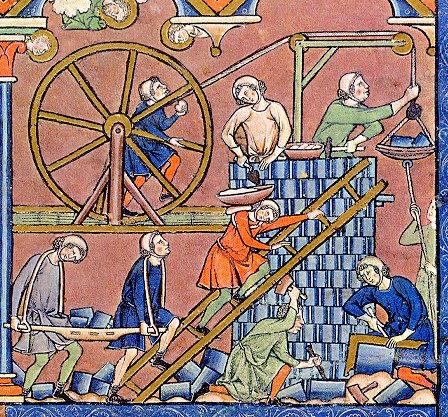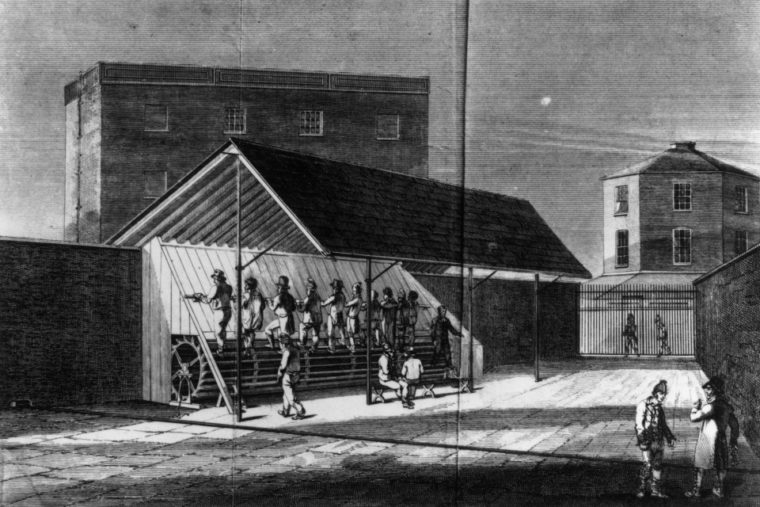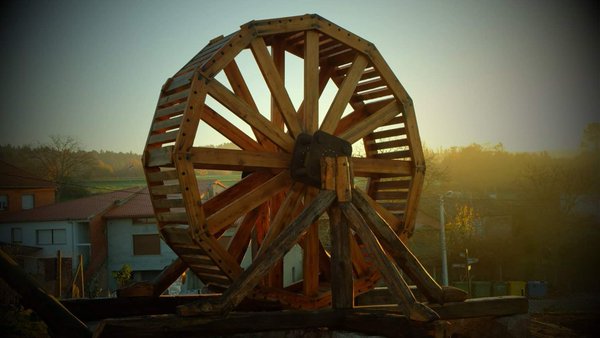When you go to a gym and see a treadmill, you might have wondered that it’s quite an invention of science for cardio and fitness but, what is more interesting is that the treadmill concept was around for thousands of years until the man finally decided to turn it in for personal health & fitness goals. If you ever had a chance to visit any developing country, you might see a perfect example of old treadmill practices in country’s rural areas, where technology is yet to reach. For instance, many rural areas use treadwheels for irrigational purposes and much more.
Several Uses of Treadmills in Pre-Industrial Times
-
In Pyramid Construction – Early Application of Treadmills
You might’ve wondered about the pyramids in the Egypt that are one out of 7 wonders of the earth. If you look into the details, the stones which weigh hundreds of tons were transported from 700-800 kilometers. Those were the ancient pre-industrial times when no electronic machines were present to transport such weight across long distances. This was the early application of treadmill. Those stones were put on the piles of wood and were then, pulled by large man-force divided into two groups. One group was tasked with putting wood piles (rollers) in front of the stone and the other group was assigned to pull the stone on the wood piles. If you compare the treadmills in the market now, they have a motorized system with a belt carrying out the same function but in those ancient times, those wood piles can be said to be the early tread belt.

Early Application of Treadmill, Pyramid Construction
At this point, it is important to know that there were two types of treadmills (treadwheel) in early times. One was horizontal and the other was vertical. The horizontal treadwheels were tied to a simple mechanism that was either used for irrigation, grinding or pulling weight purposes. In ancient Egypt, horizontal treadwheels were used to irrigate the land from the Nile River. While the vertical treadwheels were used for grinding grain.
-
Construction of Babel Tower – In Roman Era
Moving on into the Roman era, they had the advanced use for treadwheels. The great example for the application of treadwheels in Roman era is the construction of Babel Tower. The treadwheel used for the construction purpose was vertical, which consisted of a wide diameter wheel attached to a mechanism. In that wheel, 2-3 people used to walk or run to turn on the mechanism and pulled stones from the ground. Other than that, Roman used the same treadmill applications for irrigational and grinding purposes.

Construction of Babel Tower – Roman Era , Application of Treadwheel
-
As a way of Punishment in 1800’s, USA Prisons
If we look in the 1800s, the treadwheel application was widely used in USA prisons. The treadwheel consisted of 20-foot long wheels with 24 steps on the 6-foot cylinder. The prisoners were used to walk on the wheel for 6 and above hours to paddle the mechanism which was then attached to further mechanism like grinding grain, kneading and pulling water for irrigational purposes. To think about it, the treadwheels could be used for purposes without electricity, is in itself intriguing. USA prisons were largely composed of the same treadmill mechanism and prisons were punished in the form of this labor. They were even hit with a hunter if they tried to get lazy.

Use of Treadwheel Application for Punishment, USA Prisons 1800s
There is an interesting article on History Today, where author urges researchers to think about the treadwheel applications operated by muscle to be turned into a valuable resource and use it for energy. These simple mechanisms could be incorporated into our daily life with a little innovation to carry out the same grinding, pulling weight, kneading and irrigational purposes but also, with little creativity, simultaneously turning that muscle power in energy resource. That practice could be effectively used in developing countries to lower energy costs while making up for the shortfall of electricity.
Furthermore, if aforementioned treadwheel application is used worldwide, we could also get rid of environmental problems efficiently, where we won’t have to think about depleting our precious resources like crude oil and radioactive compounds, which otherwise could be used for much more useful purposes. We know that it’s off the topic but just for a food for thought, if we could really incorporate these treadwheel applications, we could save us and the coming generations from series of problems.
So, when someone asks you about the invention of treadmills and feels surprised, you can make them even more surprised by informing them about aforementioned treadmill applications that have been around for centuries. The treadwheel crane (also known as, Magna rola) used in the era of Ancient Rome and even now, the Cathedral Towers you come across were all made by men with these treadwheel cranes that were used to lift heavy constructional material. Even now, these old practices could be seen in developing countries, where horizontal treadwheel is attached to an animal like Ox etc. which is attached to a mechanism that is used to pull water from the canal, well or even river, to irrigate land by animal going round in circles.

Magna Rola, used in the era of Ancient Rome
Lastly, the technology progressed and mankind turned different resources into energy. For instance, a typical example of it is a windmill which eliminated the need for man or animal to run a treadwheel mechanism. Now, the wind turns the fan of a windmill which is in turn, attached to treadwheel mechanism that is used to crush grain.
All of the above practices of treadmills were used long before the industrial age and are still used now. Humans have been part of two industrial revolutions and have seen many changes and innovations. This has happened even with the treadmills and the desire to change things by making them more perfect and more useful to our society is still affecting them. Now, we are enthusiastically waiting to see what the treadmill of the future is going to be. However, if you have any other valuable information to share about other ancient treadmill application, feel free to let us know in the comments. We’ll love to hear about new applications of a treadmill used in pre-industrial times.


Leave a Reply